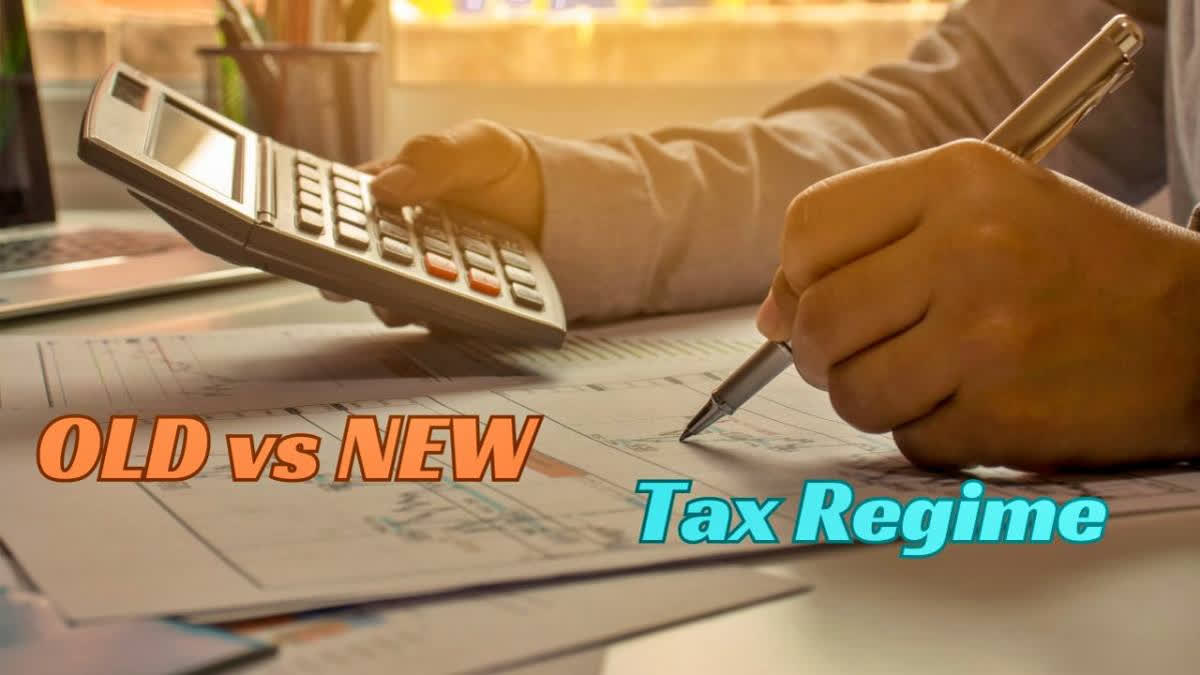Hyderabad: Choosing the right income tax regime can be a perplexing task for any taxpayer. The Central Board of Direct Taxes (CBDT), the apex direct tax body offers two options, first one being the traditional old regime and a simplified new regime which was introduced in the 2020 Union Budget. Each has its own set of advantages and disadvantages, it is therefore important to understand the nuances before making a decision.
Here is a low down of the two tax regimes so that you can choose the best one as per your requirements.
- Old income tax regime:
The old regime, also known as the regular regime, offers a familiar and established tax structure. Here are its key features:
1. Higher Tax Brackets:
This regime boasts wider tax slabs, meaning a larger portion of your income falls under lower tax rates. This can be beneficial for high-income earners who can leverage these brackets to minimize their overall tax burden.
2. Several Exemptions:
The old regime allows a taxpayer to claim several deductions and exemptions under various sections of the Income Tax Act. These deductions cover investments in instruments like the Public Provident Fund (PPF), Equity Linked Savings Schemes (ELSS), medical expenses, house rent allowance (HRA), and education loans. By strategically utilizing these deductions, an income taxpayer can significantly reduce his or her taxable income.
For example, for self-occupied properties, one can claim a tax deduction on the interest paid towards a home loan up to Rs 2 lakh each year under section 24(b). This deduction is not available under the new tax regime. Similarly, other deductions such as HRA under Section 10(13A), LTC under Section 10(5), NPS contribution under Section 80CCD(1B) are not available under the Section 115 BAC of the new tax regime.
However, the old regime comes with its own set of drawbacks:
For example, there is a requirement to maintain records as claiming deductions under the old income tax regime requires maintaining receipts and documentation, leading to a more intricate tax filing process. This complexity can be time-consuming and prone to errors.
1. Potential for Scrutiny:
With several deductions and exemptions under the Income Tax Act, a taxpayer opting for the old income tax regime might attract scrutiny from tax authorities, requiring additional time and effort for justification.
- New Income Tax Regime:
The new income tax regime, which has now become the default tax regime, was first Introduced in the Budget in 2020. The new regime offers a streamlined tax structure with reduced rates. Here's a breakdown of its key aspects:
1. Lower Tax Rates under New Tax Regime:
The new income tax regime boasts lower tax slabs compared to the old income tax regime, especially for income brackets below Rs. 15 lakhs. This can translate into lower tax liability for individuals in these categories.
2. Simplified filing under new tax regime:
The new income tax regime has done away with the most deductions and exemptions available under the old income tax regime, making the tax filing process significantly simpler. With fewer calculations and documents to manage, filing income tax returns becomes less time-consuming and error-prone for an income taxpayer.
However, the new regime also has its limitations and drawbacks.
By forgoing deductions, a taxpayer might lose out on tax benefits associated with investments, medical expenses, and other expenditures. This can significantly impact tax savings, particularly for individuals who actively utilize these deductions under the old regime.
1. Standard deduction under new tax regime:
The new regime offers a standard deduction of Rs. 50,000 to partially compensate for the lack of exemptions and deductions as applicable under the old income tax regime. However, this fixed deduction might not be as beneficial as the tailored deductions available in the old regime.
2. Choosing the right income tax regime:
There's no one-size-fits-all answer when it comes to selecting the best income tax regime for individual taxpayers. Here are some factors to consider when making the decision.
3. Income Level:
If a taxpayer’s income falls below Rs. 10 lakhs in a financial year then the lower tax rates in the new regime might be more attractive. However, for higher income earners, the tax benefits under the old regime could outweigh the slightly higher tax rates.
4. Investment as a tax saving tool:
If a taxpayer invests heavily in instruments such as PPF, ELSS, or claims significant medical expenses, the deductions offered by the old regime can be highly advantageous. However, if your investments are minimal, the new regime's simplicity might be more appealing.
5. Time saving tax filing process:
If a taxpayer prefers a hassle-free tax filing process, the new regime's streamlined approach could be a better option. However, if a taxpayer is comfortable in managing documentation and maintaining records for deductions, then the old regime might offer greater tax savings.
6. Recent Changes:
The Union Budget 2023 introduced some key changes and the new income tax regime has been made the default tax regime. Taxpayers opting for the old regime now need to explicitly choose it while filing their returns.
7. Reduced Surcharge:
The surcharge rate for income exceeding Rs. 5 crores has been reduced, impacting the effective tax rate for high net-worth individuals.
Choose what is best for you!
Carefully evaluate your income, investment habits, and time constraints before selecting the right income tax regime for yourself. You can also consult a professional tax consultant such as a Chartered Accountant or also take help from a Tax Return Preparer (TRP).
Please keep one thing in mind that the best income tax regime for you can change from financial year to financial year based on your evolving financial situation. Regularly assess your needs and make adjustments as necessary to ensure you're maximizing your tax benefits.



